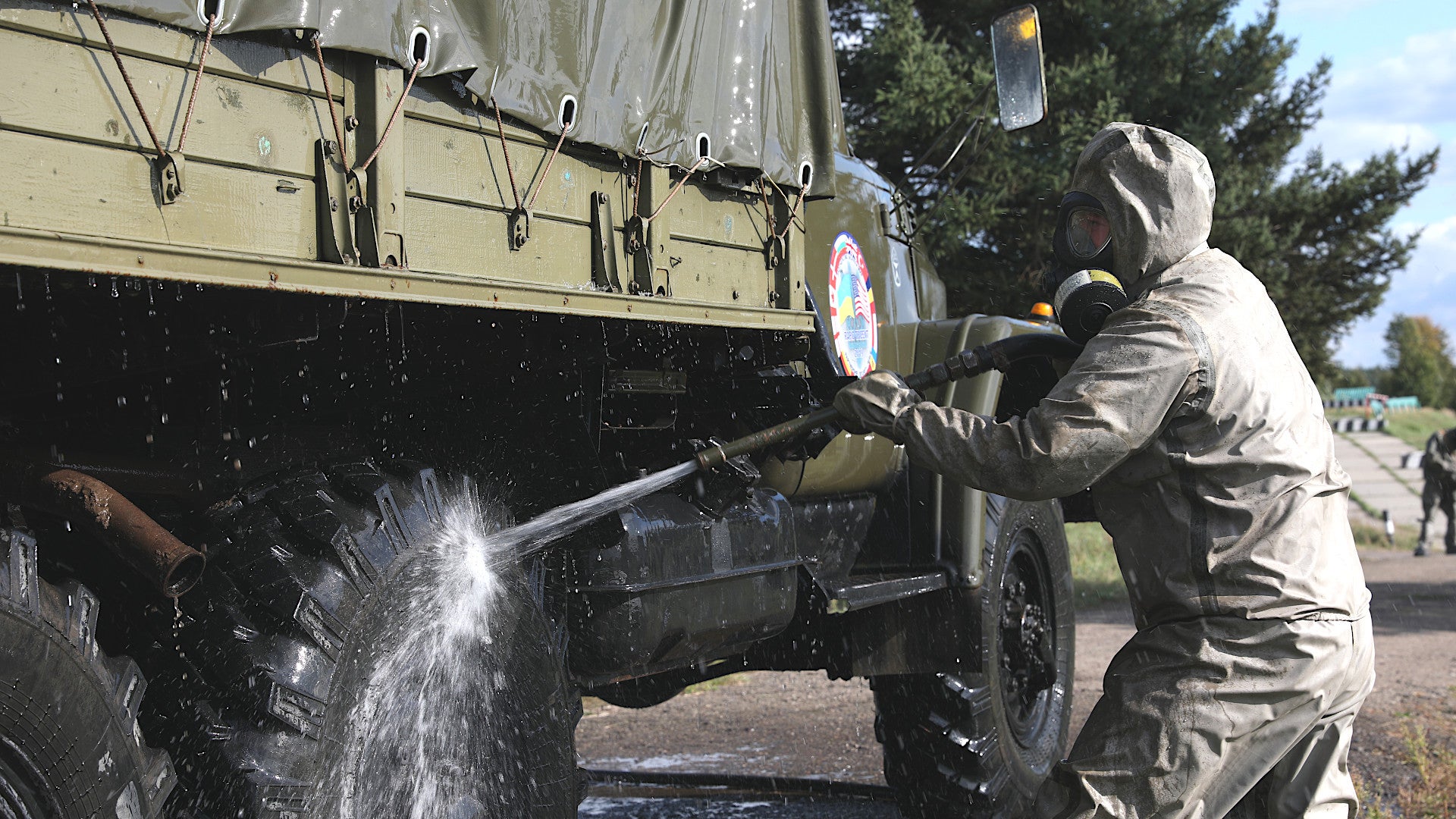As Russia’s war in Ukraine turns four weeks old, NATO is preparing to hold an extraordinary meeting of member nation heads of state that will focus on matters related to the conflict. The alliance’s Secretary-General Jens Stoltenberg has said he expects the gathering to result in, among other things, the approval of new military assistance packages for Ukrainian authorities, which will include equipment to help the country defend itself against chemical, biological, and nuclear threats and further help in guarding against cyberattacks. This comes as Russian officials continue to make wholly unsubstantiated claims that Ukrainian forces, possibly with American support, may be preparing to launch attacks involving weapons of mass destruction or stage chemical, biological, or nuclear accidents. This, in turn, has raised fears that Russia’s forces may be about to do the same, possibly as part of a false flag operation.
Readers can first get up to speed on what has been happening in the conflict in Ukraine already with The War Zone‘s preceding rolling coverage here.
The Latest
UPDATED—
The War Zone‘s ongoing rolling coverage of the conflict in Ukraine can be found here.
POSTED: 12:20 PM EST—
NATO Secretary-General Jens Stoltenberg spoke to reporters earlier today ahead of the extraordinary meeting of member nation heads of state, which is scheduled to take place tomorrow. In addition to chemical, biological, radiological, and nuclear defensive equipment and cybersecurity assistance for Ukraine, he said he expected the alliance to formally establish four new standing battle groups in Bulgaria, Hungary, Romania, and Slovakia, and to step up support for non-members Georgia and Bosnia–Herzegovina.
Stoltenberg did not say more on what would specifically be included in the new military aid shipments for Ukraine. He did say that any use of chemical and biological weapons could have “dire consequences” for NATO members, as well as Ukraine, and that the Russian government’s “nuclear saber-rattling” was “dangerous” and “irresponsible.”
The NATO Secretary-General said that the forces that will make up the four additional NATO battle groups are largely in place already. This is, in part, a result of the alliance’s recent buildup of forces along its eastern periphery in response to the crisis in and around Ukraine, which started before Russia launched its invasion in February. “We will have them in place as long as necessary,” he added.
A NATO official separately told reporters today that the alliance believes between 7,000 and 15,000 Russian troops may have been killed in the fighting in Ukraine since the invasion began. That individual said that this was based on information from Ukrainian authorities and data that Russian officials have released “intentionally or by mistake.”
That official said that Russian forces continue to appear stalled on many fronts and have resorted to what they described as World War II-era tactics, such as mass bombardments, in order to make any gains. The individual further stressed that the alliance views the possibility of Russian forces employing weapons of mass destruction as very real.
The NATO official continued by saying that possible weapons of mass destruction incidents could involve false flag operations involving the release of harmful chemicals or attacks involving actual purpose-produced chemical agents. In the latter case, it would be very difficult for Russia to conceal active involvement.
The U.K. Ministry of Defence has released its latest map, seen below, regarding the current situation on the ground in Ukraine. British authorities had earlier said that they had assessed Russian forces in the eastern portion of the country were trying to “envelop” Ukrainian units, while those in the south appeared to be trying to bypass the city of Mykolaiv as part of an advance toward the strategic Black Sea port city of Odesa.
At the same time, there continue to be reports that Ukrainian forces are conducting counteroffensives in various areas of the country, including around the capital Kyiv.
The Russian Ministry of Defense has released a video shot using a drone that it says shows the targeting of a transporter-erector-launcher (TEL) associated with one of Ukraine’s S-300PS surface-to-air missile systems. A precision-guided weapon of some kind, possibly a Krasnopol laser-guided 152mm artillery shell. The appearance of this footage comes as the U.S. continues to work with its NATO allies and others to find ways to bolster Ukraine’s air defense capabilities, which have been critical to preventing Russian from gaining air superiority in the conflict so far.
Ukraine’s Deputy Prime Minister says that negotiations between Ukrainian and Russian officials have yielded new agreements to establish nine humanitarian corridors across the country. Of course, Russian forces have been accused of violating a number of such arrangements in the past.
The Russian Foreign Ministry has claimed that the country has carried out two prisoner swaps with Ukrainian authorities over the course of the conflict so far.
Russian President Vladimir Putin has announced that “unfriendly countries” will have to pay for the country’s oil and gas in rubles, rather than in euros or dollars. With many European nations still heavily reliant on Russian energy resources, and the ruble’s value collapsing under crippling international sanctions, some have pointed out that this might offer a way to help stabilize the value of Russia’s currency.
We will continue to update this post with new information until we state otherwise.
Contact the author: joe@thedrive.com

